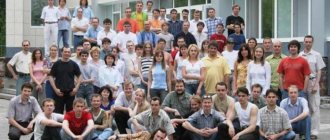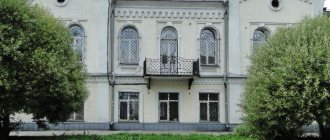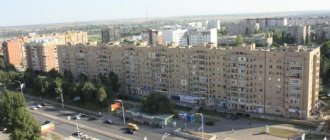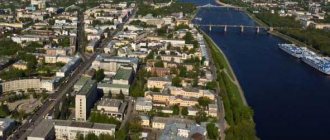Holiday calendar, signs, dates and events for every day of the year - folk calendar, Orthodox calendar, church calendar, eastern calendar, astrological calendar, lunar calendar, industrial calendar, as well as state and professional holidays, including significant World and International holidays and public holidays , folk holidays and omens, and other equally interesting and unusual holidays, dates and events of the year, zodiac signs, dream books and much more.
Calendar for 2022
| January | ||||||
| Mon | W | Wed | Thu | Fri | Sat | Sun |
| February | ||||||
| Mon | W | Wed | Thu | Fri | Sat | Sun |
| March | ||||||
| Mon | W | Wed | Thu | Fri | Sat | Sun |
| April | ||||||
| Mon | W | Wed | Thu | Fri | Sat | Sun |
| May | ||||||
| Mon | W | Wed | Thu | Fri | Sat | Sun |
| 1 | ||||||
| 2 | 3 | 4 | 5 | 6 | 7 | 8 |
| 9 | 10 | 11 | 12 | 13 | 14 | 15 |
| 16 | 17 | 18 | 19 | 20 | 21 | 22 |
| 23 | 24 | 25 | 26 | 27 | 28 | 29 |
| 30 | 31 | |||||
| June | ||||||
| Mon | W | Wed | Thu | Fri | Sat | Sun |
| 1 | 2 | 3 | 4 | 5 | ||
| 6 | 7 | 8 | 9 | 10 | 11 | 12 |
| 13 | 14 | 15 | 16 | 17 | 18 | 19 |
| 20 | 21 | 22 | 23 | 24 | 25 | 26 |
| 27 | 28 | 29 | 30 | |||
| July | ||||||
| Mon | W | Wed | Thu | Fri | Sat | Sun |
| 1 | 2 | 3 | ||||
| 4 | 5 | 6 | 7 | 8 | 9 | 10 |
| 11 | 12 | 13 | 14 | 15 | 16 | 17 |
| 18 | 19 | 20 | 21 | 22 | 23 | 24 |
| 25 | 26 | 27 | 28 | 29 | 30 | 31 |
| August | ||||||
| Mon | W | Wed | Thu | Fri | Sat | Sun |
| 1 | 2 | 3 | 4 | 5 | 6 | 7 |
| 8 | 9 | 10 | 11 | 12 | 13 | 14 |
| 15 | 16 | 17 | 18 | 19 | 20 | 21 |
| 22 | 23 | 24 | 25 | 26 | 27 | 28 |
| 29 | 30 | 31 | ||||
| September | ||||||
| Mon | W | Wed | Thu | Fri | Sat | Sun |
| 1 | 2 | 3 | 4 | |||
| 5 | 6 | 7 | 8 | 9 | 10 | 11 |
| 12 | 13 | 14 | 15 | 16 | 17 | 18 |
| 19 | 20 | 21 | 22 | 23 | 24 | 25 |
| 26 | 27 | 28 | 29 | 30 | ||
| October | ||||||
| Mon | W | Wed | Thu | Fri | Sat | Sun |
| 1 | 2 | |||||
| 3 | 4 | 5 | 6 | 7 | 8 | 9 |
| 10 | 11 | 12 | 13 | 14 | 15 | 16 |
| 17 | 18 | 19 | 20 | 21 | 22 | 23 |
| 24 | 25 | 26 | 27 | 28 | 29 | 30 |
| 31 | ||||||
| November | ||||||
| Mon | W | Wed | Thu | Fri | Sat | Sun |
| 1 | 2 | 3 | 4 | 5 | 6 | |
| 7 | 8 | 9 | 10 | 11 | 12 | 13 |
| 14 | 15 | 16 | 17 | 18 | 19 | 20 |
| 21 | 22 | 23 | 24 | 25 | 26 | 27 |
| 28 | 29 | 30 | ||||
| December | ||||||
| Mon | W | Wed | Thu | Fri | Sat | Sun |
| 1 | 2 | 3 | 4 | |||
| 5 | 6 | 7 | 8 | 9 | 10 | 11 |
| 12 | 13 | 14 | 15 | 16 | 17 | 18 |
| 19 | 20 | 21 | 22 | 23 | 24 | 25 |
| 26 | 27 | 28 | 29 | 30 | ||
Designations in the calendar: X - holidays; X—weekends; X - reduced working day by 1 hour;
City birthday: Tomsk turns 409 years old
By the end of the 19th century, Tomsk had become the most populous city in Siberia, and by the beginning of the First World War it was one of the 20 largest cities in the country. In terms of trade turnover, it ranked first in Siberia and developed as a transport hub in the region.
The period from 1918 to 1944 was a time of serious decline for Tomsk, a decline in its regional status, and there was a powerful outflow of population to the fast-growing Novosibirsk and other cities located on the Trans-Siberian Railway.
During the Great Patriotic War, about 30 enterprises from the European part of Russia were evacuated to Tomsk, which became the basis of the city's industry. The administrative status of the city also changed - on August 13, 1944, the Tomsk region was formed, Tomsk became a regional center.
Tomsk bears the unofficial name “Siberian Athens” due to the fact that at the end of the 19th and beginning of the 20th centuries, the first higher educational institutions in the Asian part of Russia were opened here - the Imperial University and the Institute of Technology. It is considered the intellectual, architectural and cultural capital of Siberia.
Currently, in Tomsk there are seven state and 2 non-state universities, there are 14 branches and representative offices of non-resident educational institutions, the number of students in the city exceeds 70 thousand people. According to this indicator, Tomsk ranks one of the first places in Russia after Moscow and St. Petersburg.
In addition, the Tomsk region has the highest share of workers with higher and secondary education in Russia from the total number of employees.
The Tomsk Scientific Center SB RAS is represented by several scientific institutes in Akademgorodok, in addition, a number of scientific medical institutions are located in the city: Research Institute of Cardiology of the Tomsk Scientific Center SB RAMS, Research Institute of Oncology, Research Institute of Mental Health, Research Institute of Pharmacology, Research Institute of Medical Genetics, Research Institute of Obstetrics, Gynecology and Perinatology, Research Institute balneology and physiotherapy.
The food industry is well developed in Tomsk, there are a large number of knowledge-intensive businesses, and the IT industry is developed. In Tomsk there are regional offices of JSC Tomskneft VNK, Vostokgazprom, Imperial Energy, Gazpromneft-Vostok, the Russneft group of companies, large industrial enterprises operate, in particular, Tomskneftekhim (Sibur) and others.
Tomsk's attractions include wooden architecture, as well as 19th-century stone buildings built by famous Russian architects. There are also many modern colorful monuments, beautiful churches and temples in the city. The relics of the holy elder Fyodor Kuzmich, who, according to 19th-century legend, is considered Emperor Alexander I, are kept in the Mother of God-Alekseevsky Monastery in Tomsk.
Since 2005, a special economic zone (SEZ) of a technology-innovation type has been created in Tomsk, where a special regime for carrying out business activities operates. Since May 2013, an international airport has been operating in Tomsk.
The population of the city, according to Tomskstat, is about 560 thousand people.
Holiday calendar, dates and events for every day of the year
All state and professional holidays of Russia, including significant World and International holidays, and other equally interesting holidays, dates and events of the year... Holiday calendar for every day; Russian production calendar with holidays.
• What holiday is today and tomorrow, dates and events...
Story
The history of Tomsk begins in 1604. By order of Boris Godunov, a fort was founded, which received the name of the same name. In 1629 it acquired the status of a city. Throughout the 18th century, trade flourished here, thanks to the large transport routes that ran through the settlement. In 1782 he entered the Tobolsk governorship.
At the beginning of the 19th century it became the center of the province. Soon after the discovery of gold deposits, rapid development began in it. Small craft shops, textile and leather industries appeared. A branch of the Trans-Siberian Railway was built nearby. It contributed to the loss of main significance.
The Bolsheviks' rise to power was marked by a confrontation with the White Guard forces. After the end of World War II, new industries were formed.
As part of the Russian Federation, it is experiencing stagnation in many areas of the economy and industry.
Church calendar for every day
The church calendar is a time counting system used by the Orthodox Church to determine the sequence of church holidays and fasts in the annual cycle, as well as the corresponding services. Also the name of printed publications of various types, containing (in addition to general calendar functionality) elements of the monthly calendar and other materials of a liturgical and menological nature adapted to a specific year. The Church calendar contains two annual circles of events... Church calendar
Coat of arms
In May 1729, Emperor Peter II approved the first coat of arms of Tomsk. The coat of arms reflected the significance of the ore deposits of the Tomsk district for the state. In 1785, a silver horse appeared on the coat of arms of Tomsk for the first time, remaining a symbol of the city to this day. It symbolizes: “the horses of this area are considered the best, and the Tatars living near them have horse stud farms.” In 2003, the modern coat of arms of Tomsk was approved, in addition to a silver horse on a green shield, a gold crown and the motto “THE LABOR AND KNOWLEDGE” were added.
Russian folk calendar for every day
Season: Winter - December, January, February.
Season: Spring - March, April, May.
Time of year: Summer - June, July, August.
Season: Autumn - September, October, November.
Tom is the main river in Tomsk
The city of Tomsk arose on the right bank of the Tom, just 50 kilometers from the place where the latter flows into the Ob. Due to this fact, the terrain in the city is quite uneven - elevation differences sometimes reach 60-80 meters. The Tomyu River formed a floodplain (up to 50 meters wide) and four above-floodplain terraces, which are densely dissected by gullies and ravines.
The total length of Tom is 827 kilometers. The water flow speed in the channel is low and does not exceed 1 m/s. The depth of the river within the city of Tomsk reaches 2.5 meters.
Constant hydrological observations of Tomya have been carried out since 1918. The average annual water consumption has remained almost unchanged since that time. But the water level in the riverbed began to decrease approximately from the mid-50s, when gravel began to be actively extracted from the Tom. The ice shell on the river forms in mid-November and lasts from 120 to 200 days (depending on the severity of winter).
Within Tomsk there are two bridges on the Tom River - Kommunalny and Northern (New) Bridge in the Seversk area.
Train Station
On the territory of the city there are two railway stations “Tomsk-I” (central in the Kirovsky district on Kirova Avenue) and “Tomsk-II” (Oktyabrsky district, Vokzalnaya street, 11). From the central railway station there are long-distance trains to Moscow, Chita, Krasnoyarsk, Severobaikalsk, Abakan, Ridder, Vladivostok.
The most popular directions from the Tomsk-II station are Moscow, Novosibirsk, Novokuznetsk, Bely Yar, Anapa, Ridder. Trains also depart from here on suburban routes to Taiga, a city in the Kemerovo region, Basandaika and Asino.
Kislovka, Basandaika, Bolshaya Kyrgyzka
The largest river on the left bank of Tomsk is Kislovka. Its total length is 49 km, the catchment area is about 200 sq. km. The river flows into the Tom near the village of Popadeikino, just opposite Seversk. The depth of Kislovka does not exceed thirty centimeters.
In the southern part of the city flows a river with the unusual name Basandaika. Its length is 57 km, of which only four are in Tomsk. The river flows into the Tom within the village of the same name.
The Bolshaya Kyrgyzka River flows on the northern outskirts of the city, separating Tomsk from neighboring Seversk. It flows into the Tom near the Northern Bridge. At the mouth of the river there is an archaeological site - a settlement of the 2nd-1st millennium BC, in which many valuable finds were found.
It is worth mentioning separately those rivers of Tomsk that have not survived to this day. Among them are Igumenka, Larinka, Medichka, Elanka, Oblepikha. Almost all of them were filled up in the middle of the last century.
Population census of Tomsk, how many people live on January 1?
What is the official population of Tomsk for 2022, how many people live according to the census, how many people are in urban areas as of January 1, trends in income and decrease, whether their number is increasing or decreasing, such questions are of interest to many and we will try to get answers to them.
The city of Tomsk with all its administrative districts is part of the Russian Federation, the administrative center of the region and district of the same name, located in the east of Western Siberia on the banks of the Tom River.
We will look into the population of the city of Tomsk, how many people live as of January 1, 2022, and how many people officially live in urban areas.









